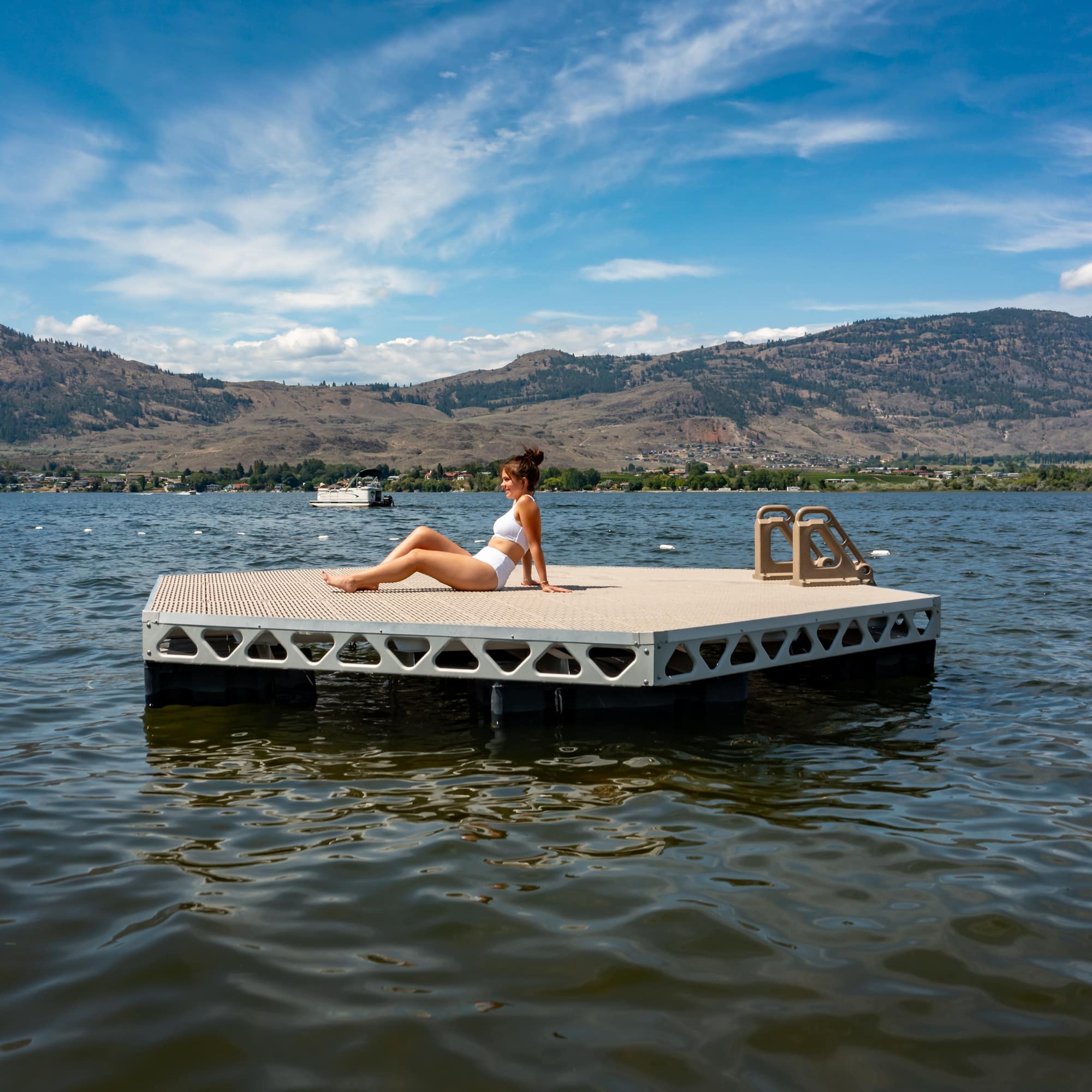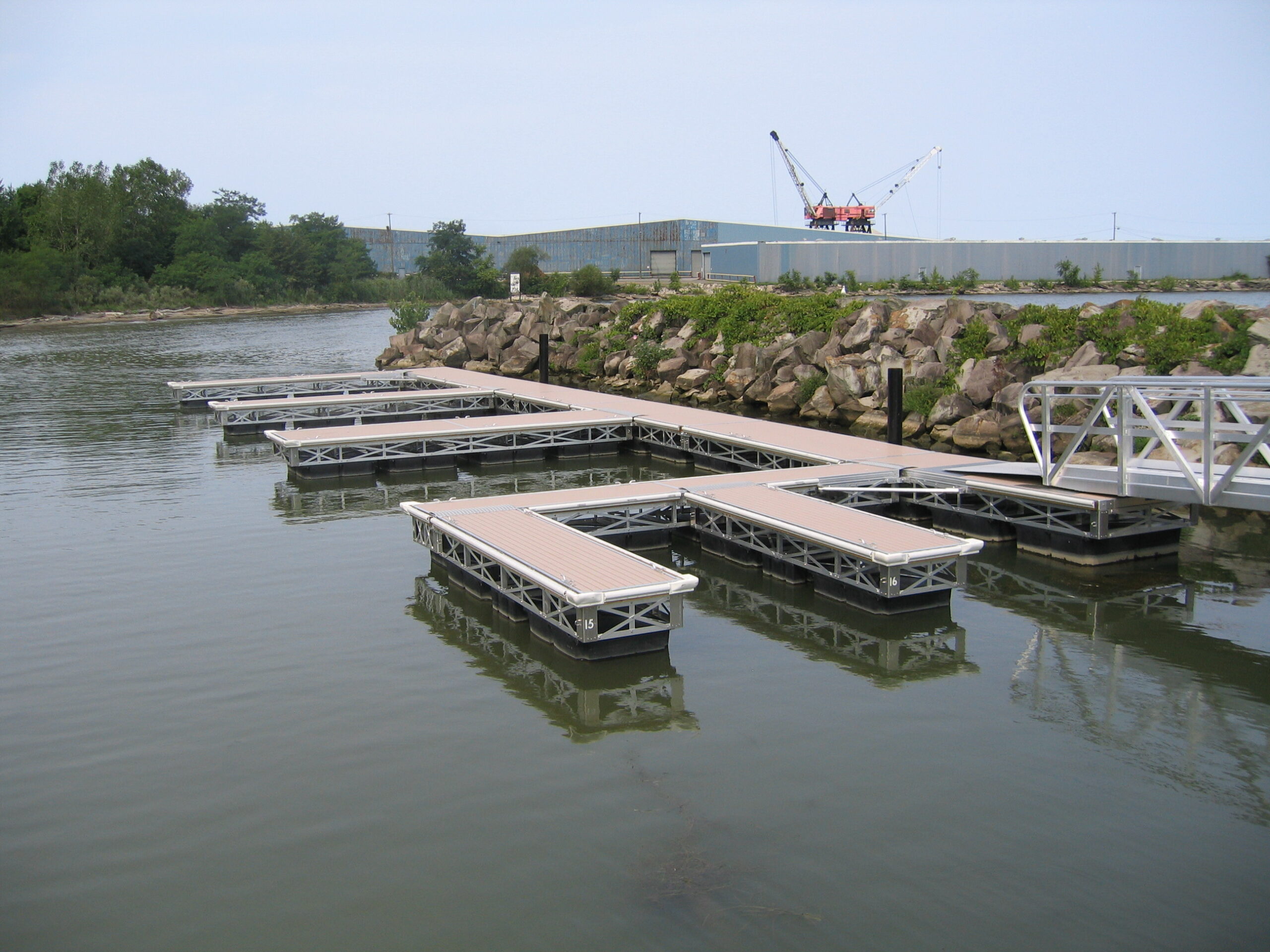Upgrade Your Waterside With Long Lasting Floating Docks
Updating your waterside with long lasting floating docks can considerably enhance both functionality and visual appeals, providing a flexible remedy for numerous water tasks. These structures are designed to adapt to rising and falling water levels, guaranteeing safety and availability throughout the seasons. With a series of materials offered, including low-maintenance options and typical timber, choosing the best dock can match your individual style and meet sensible demands. However, understanding the subtleties of setup and maintenance is essential for guaranteeing long life and performance. When making this investment?, what factors should you think about.
Advantages of Floating Docks
Floating docks offer a wide variety of benefits that boost their appeal for different maritime applications. Unlike traditional set docks, floating docks surge and loss with the tide, making certain regular ease of access for boats and boat regardless of environmental conditions.
Furthermore, floating docks are simpler to set up and move, providing versatility for momentary or seasonal usage. Their modular layout enables personalization to fit certain requirements, whether for personal marinas, domestic beachfronts, or business applications.
Furthermore, floating docks produce minimal disturbance to the water atmosphere, preserving local ecosystems and minimizing the possibility of erosion. They additionally provide enhanced safety and security for users, as their buoyant nature provides an extra flexible surface area than inflexible frameworks.
In addition, floating docks can assist in a varied array of tasks, such as angling, swimming, and entertainment boating, making them a useful property for beachfront growth. Their adaptability and practicality make floating docks a recommended choice for a range of marine tasks.
Choosing the Right Materials
Selecting proper products for floating docks is important to their durability, performance, and general efficiency. When picking products, consider elements such as ecological direct exposure, maintenance requirements, and architectural stability. Typical products consist of timber, plastic, aluminum, and composite choices, each offering distinct benefits and downsides.
Wood, while visually pleasing, needs normal upkeep to avoid rot and decay. Pressure-treated wood can boost longevity, yet it may still catch water damages gradually. Plastic floats, typically made from high-density polyethylene, are immune to deterioration and need minimal maintenance, making them an attractive option for low-maintenance applications.
Light weight aluminum is an additional sensible alternative, understood for its stamina and lightweight homes. It is resistant to corrosion and can withstand severe weather, although it might be much more costly than various other materials. Compound products incorporate the best features of timber and plastic, using a low-maintenance and resistant option that mimics the appearance of timber without the associated disadvantages.
Ultimately, the choice of material should align with the meant usage, environmental considerations, and budget constraints, making certain a practical and durable floating dock that fulfills your specific requirements.
Setup Process Introduction
The effective setup of a drifting dock relies on careful preparation and execution, ensuring that it operates efficiently in its desired atmosphere. The primary step involves examining site problems, including water depth, shoreline functions, and prevailing climate patterns, which will educate the dock layout and anchoring system.
Adhering to the site analysis, the following stage is to prepare the floating dock elements. This includes assembling the frame, protecting drifts, and connecting any kind of necessary hardware. It is important to guarantee that all links are waterproof and durable to hold up against aquatic problems.
As soon as the dock read review is set up, the installation process starts with positioning the dock in the water. This can include a crane or various other lifting devices, particularly for bigger structures. Appropriate placement is crucial for capability and safety.

Upkeep Tips for Longevity
Normal upkeep is necessary for guaranteeing the durability and ideal performance of a floating dock. To accomplish this, begin with routine examinations at least twice a year, concentrating on the integrity of the dock's structure, including the flotation protection tools and linking equipment. Seek indicators of corrosion, damage, or wear, and deal with any problems immediately to stop more wear and tear.
Cleansing is another important facet of upkeep. Eliminate debris, algae, and barnacles from the dock's surface area to stop unsafe conditions and preserve visual allure. Utilize a light detergent and a soft brush to stay clear of harming the dock's materials.
Furthermore, make sure that the dock is properly anchored and secured to hold up against seasonal adjustments in water levels and weather condition conditions. Examine the anchoring system for stability and make changes as needed.
Enhancing Your Outdoor Aesthetic
To develop a visually appealing outdoor area, integrating a floating dock can dramatically enhance the total visual of your beachfront property. Floating docks are not just functional but can additionally function as a striking centerpiece that complements the natural environments - floating dock services. Offered in different products and styles, these docks can be tailored to match your home's building design and landscape
The addition of decorative elements, such as incorporated lighting or fashionable barriers, further boosts the dock's aesthetic appeal. Take into consideration utilizing natural timber finishes, which mix anchor perfectly with the environment, or choosing modern products like light weight aluminum or composite outdoor decking that use a smooth, contemporary appearance.
Tactically positioning planters or seating areas on or around the dock can produce inviting rooms that motivate relaxation and enjoyment of waterside sights. Additionally, visit here including colors and appearances that balance with your landscape will certainly produce a natural visual throughout your outside location.

Final Thought

Updating your beachfront with long lasting floating docks can significantly enhance both capability and aesthetic appeals, supplying a versatile option for numerous water tasks. Unlike traditional set docks, floating docks increase and autumn with the tide, guaranteeing regular availability for boats and watercraft no matter of ecological conditions.Choosing suitable products for floating docks is essential to their durability, efficiency, and overall performance.When the dock is put together, the setup procedure commences with positioning the dock in the water.In recap, floating docks deal numerous benefits, consisting of adaptability to water degree modifications and a variety of material choices.
Comments on “Optimizing Your Outdoor Area with Specialized Floating Dock Services”